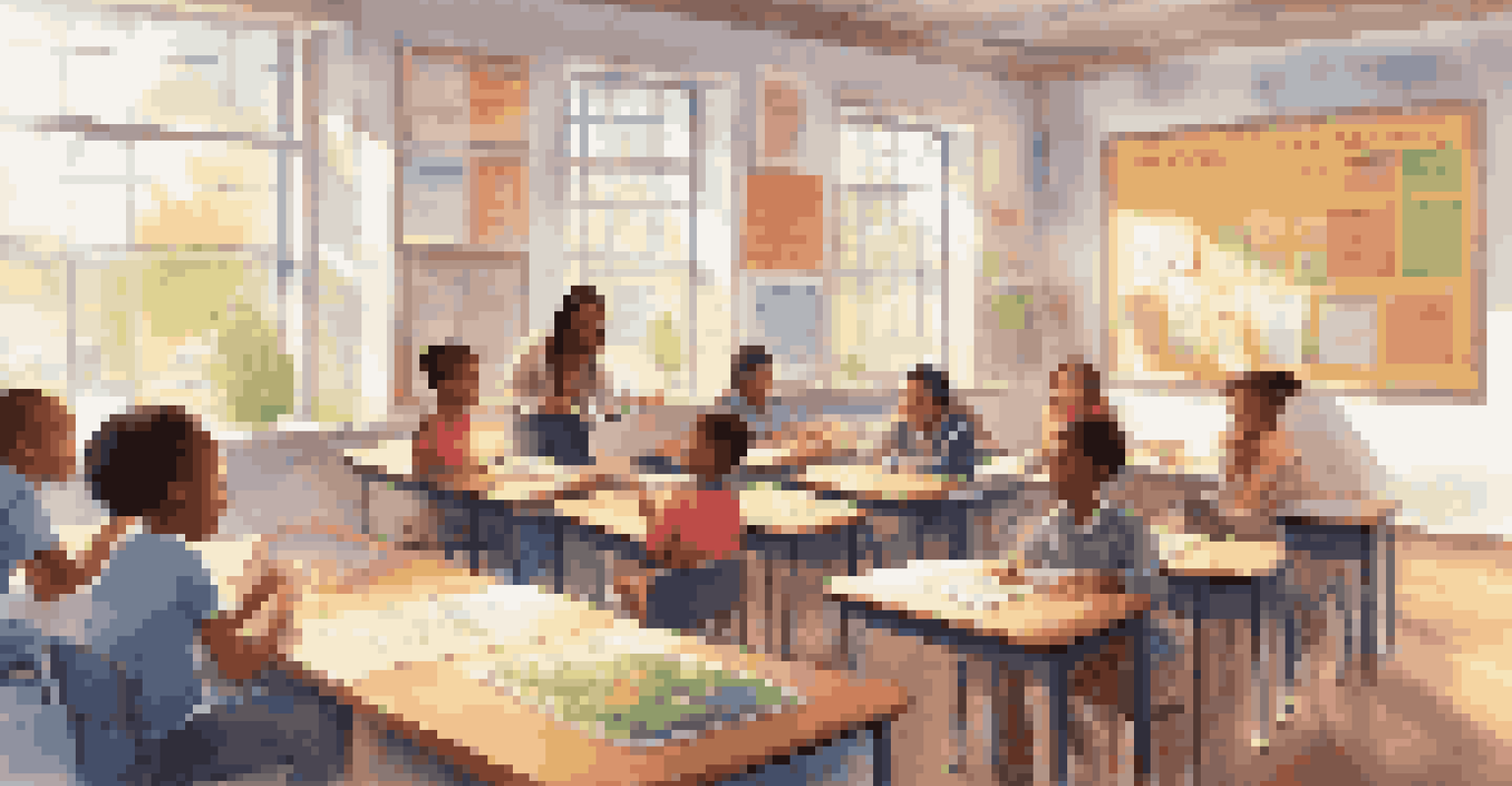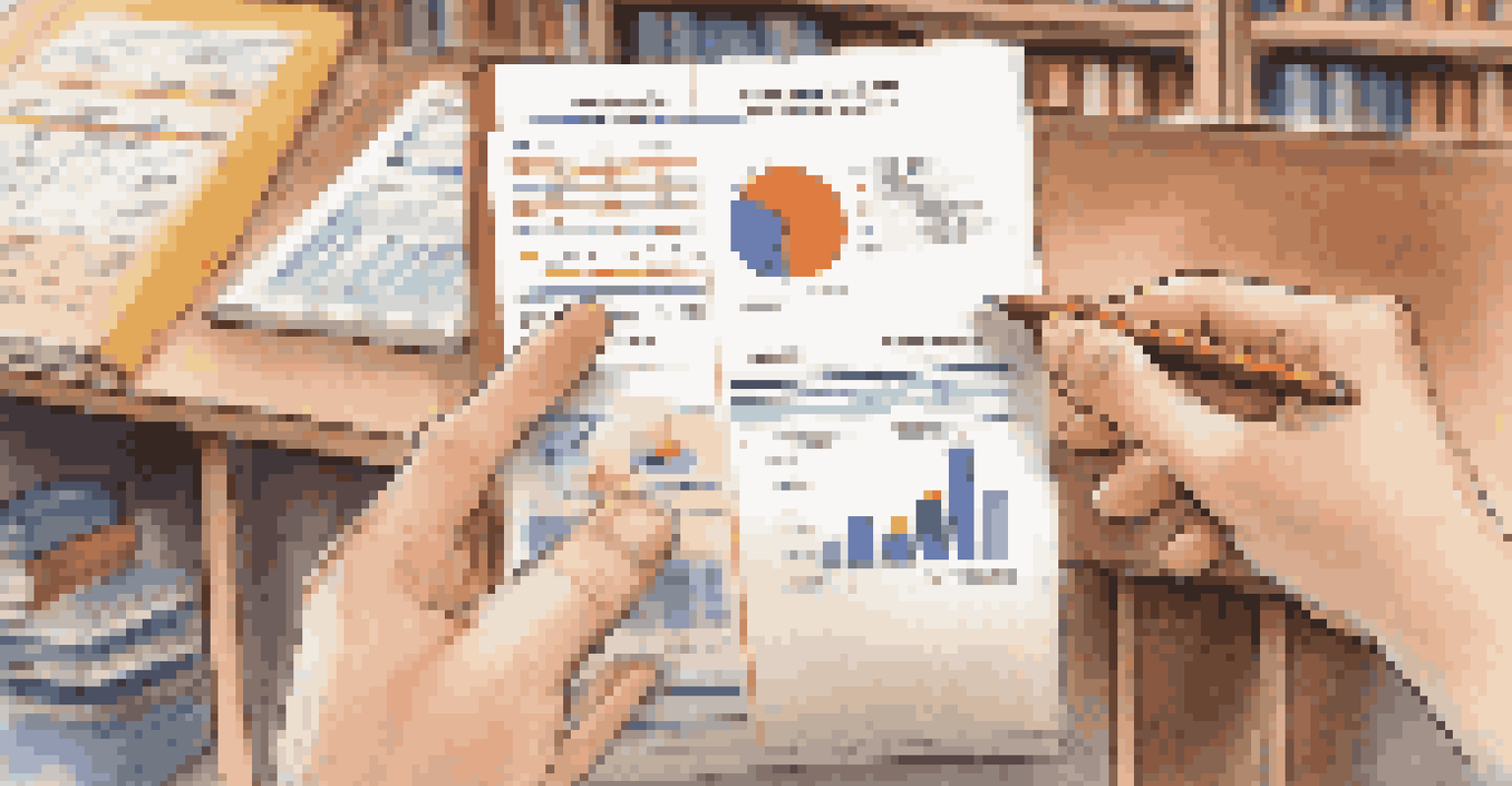Integrating Public Policy into Educational Programs

Understanding the Role of Public Policy in Education
Public policy serves as the backbone of our educational systems, shaping everything from curricula to funding. It encompasses the laws and regulations that govern how schools operate, ensuring accountability and equity for all students. For instance, federal policies like the Every Student Succeeds Act aim to improve educational outcomes and close achievement gaps.
Public policy is the art of making the world a better place through the laws that govern us.
When we talk about integrating public policy into education, we're looking at how these laws can be woven into the fabric of classroom instruction and school management. This integration helps educators understand the framework in which they operate, allowing them to align their teaching strategies with broader educational goals. The clearer this connection, the more effective educational programs can become.
Moreover, understanding public policy can empower educators and students alike to advocate for necessary changes. By grasping the policies that influence their environment, teachers can better lobby for resources and reforms that enhance learning experiences. This awareness cultivates a proactive educational community invested in continuous improvement.
The Importance of Collaboration Between Policymakers and Educators
Collaboration between policymakers and educators is essential for creating effective educational programs. When these two groups work together, it fosters a mutual understanding of the challenges faced in classrooms and the realities of policy implementation. For example, teachers can provide firsthand insights that help shape more practical and relevant policies.

When educators are involved in the policymaking process, the resulting policies tend to be more responsive to the needs of students. This collaboration can take many forms, from advisory boards to public forums, where teachers can voice their concerns and suggestions. By leveraging the expertise of educators, policymakers can craft solutions that truly address the complexities of modern education.
Public Policy Shapes Education
Public policy serves as the foundation of educational systems, influencing everything from curricula to funding and ensuring equity for all students.
Ultimately, this partnership leads to policies that are both innovative and grounded in real-world practices. When teachers feel heard and valued in the decision-making process, it creates a sense of ownership and commitment to the policies enacted. This, in turn, translates to more effective educational programs that benefit everyone involved.
Examples of Successful Integration of Public Policy in Education
Successful integration of public policy into educational programs can be seen in initiatives like dual-language immersion programs. These programs are often supported by state policies that encourage bilingual education, recognizing the benefits of fostering linguistic diversity. In this case, public policy directly influences the curriculum, helping students gain valuable skills for a globalized world.
Education is the most powerful weapon which you can use to change the world.
Another example is the implementation of social-emotional learning (SEL) in schools, which has gained traction thanks to supportive public policies. Many states have recognized the importance of SEL in enhancing student well-being and academic performance, pushing for policies that require its inclusion in school curricula. Here, public policy not only shapes educational content but also prioritizes holistic student development.
These examples illustrate how policy can drive innovation within education, creating programs that resonate with the needs of students and communities. By examining successful case studies, educators can draw inspiration and insights for integrating public policy effectively in their own practices.
Challenges in Merging Public Policy with Educational Programs
While the integration of public policy into education is vital, it does come with its challenges. One significant hurdle is the often slow and bureaucratic nature of policy-making, which can hinder timely implementation in schools. This lag can leave educators feeling frustrated, especially when they are eager to adopt new practices that would benefit their students.
Another challenge is the mismatch between policy intentions and on-the-ground realities. Policies may be well-meaning but can sometimes overlook the unique contexts of individual schools or communities. This disconnect can lead to confusion and resistance among educators who may not see the relevance of certain policies in their day-to-day work.
Collaboration Enhances Policies
Effective educational programs emerge when policymakers and educators collaborate, ensuring policies are relevant and responsive to classroom realities.
Lastly, the lack of adequate training and resources to help educators understand and implement these policies can be a significant barrier. Without proper support, teachers may struggle to translate policy mandates into effective teaching practices. Addressing these challenges requires ongoing dialogue and collaboration among all stakeholders in the education system.
The Role of Data in Informing Educational Policy Decisions
Data plays a crucial role in shaping effective educational policies. By analyzing student performance metrics, attendance rates, and other relevant statistics, policymakers can identify trends and areas that need improvement. This data-driven approach helps ensure that decisions are based on evidence rather than assumptions, leading to more effective educational outcomes.
For instance, if data shows a particular demographic is consistently underperforming, policymakers can allocate additional resources or create targeted programs to address these disparities. This targeted intervention can make a significant difference in closing achievement gaps and fostering equal opportunities. The key is to continually assess and adapt based on what the data reveals.
Moreover, involving educators in the data analysis process can enhance the relevance and application of findings. When teachers understand the data and how it relates to their students, they can implement strategies that are informed by real-world insights. This collaboration not only enriches the educational experience but also fosters a culture of continuous improvement.
Training Educators in Public Policy Awareness
Training educators to understand public policy is essential for effective integration into educational programs. Professional development workshops can equip teachers with the knowledge they need to navigate the policy landscape. By demystifying complex legislation and regulations, educators can feel more confident in their roles as advocates for their students.
Additionally, providing resources and tools that help teachers stay updated on policy changes can make a significant difference. Regular newsletters, webinars, and online courses can serve as valuable platforms for ongoing education. This investment in teacher training not only enhances their understanding but also empowers them to influence policies that impact their classrooms.
Data-Driven Policy Decisions
Utilizing data to inform educational policies allows for targeted interventions that address disparities and improve student outcomes.
Ultimately, when educators are well-versed in public policy, they can better align their teaching strategies and classroom practices with the goals set forth by these policies. This alignment leads to more effective education delivery and ensures that students receive the best possible learning experiences.
Future Directions for Integrating Public Policy in Education
Looking ahead, the integration of public policy into education will likely evolve alongside changing societal needs. As technology continues to reshape how we learn, policies must adapt to support innovative teaching methods and digital learning environments. This evolution presents an exciting opportunity for educators and policymakers to collaborate on new frameworks that enhance student engagement.
Moreover, as global issues such as climate change and social justice gain prominence, educational policies will increasingly reflect these priorities. Integrating these themes into curricula will not only prepare students for the challenges they will face but also empower them to become informed and active citizens. The role of public policy will be crucial in facilitating this shift.

In conclusion, the future of education will depend on a proactive approach to integrating public policy. By fostering collaboration, leveraging data, and investing in educator training, we can create a more responsive and effective educational system. Together, educators and policymakers can ensure that every student thrives in an ever-changing world.